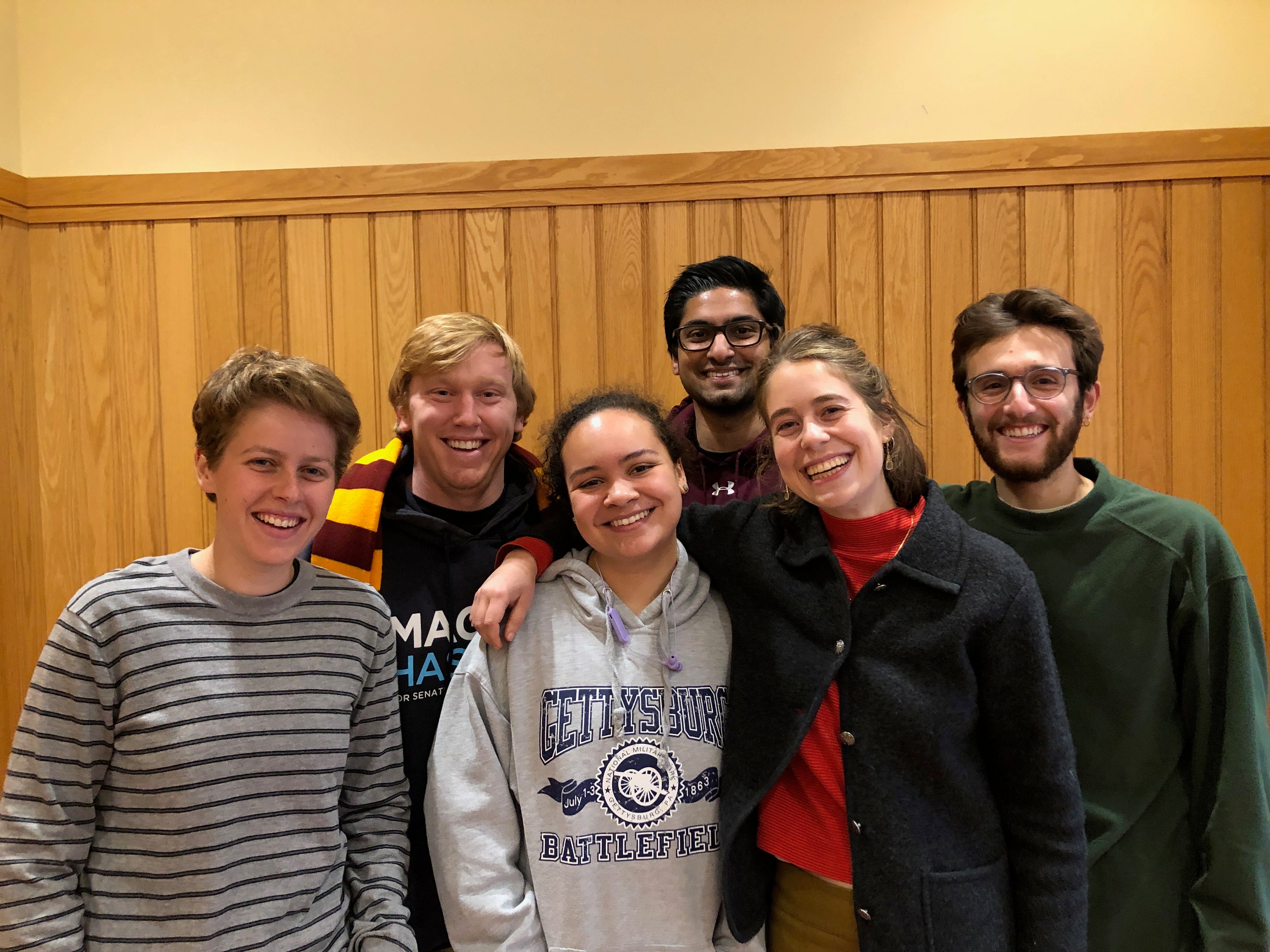Undergraduate Research
OUR Featured Researchers: Mithila Paintings Research Group
OUR Featured Researchers: Noa Gordan-Guterman, Will Cramer, Nalin Beckman, Lucy Brown, Rehaan Bux, and Jonah Gelfand

Jonah (he/him), Nalin (she/her), Noa (she/her), Will (he/him), Rehaan (he/him), and Lucy (they/them) conduct mentored research under Professor Emilia Bachrach. Their project is titled "From Wall Painters to Fine Artists in North India: Mithila Paintings".
Please describe your project:
We curated a StudiOC exhibit for the Paula Richman “Ramayana Weekend” featuring Mithila Paintings, which is a form of painting and drawing from Northeast India. We utilized Mithila paintings from the Oberlin Special Collections, which were donated by Joann F. and Joseph W. Elder. The selected works depict various scenes from the Indian epic, The Ramayana. Through researching the history of the Mithila art form and a close reading of the works, we learned how artists have utilized different styles and methods to depict pan-Indic narratives and themes, as well as local traditions. As a group, we developed two thematic frameworks for our curation, organizing the pieces around the themes of “deification of characters” and “caste-based techniques.” Through this research, we were able to grapple with broader themes of globalization, commodification, and how the Ramayana continues to exist as a contemporary “living tradition” within and outside of India.
Why is your research important?
While in the classroom, the Ramayana becomes distilled into a static text, and our research challenges this assumption and illustrates the Ramayana as a “living tradition” with many possible interpretations. Our exhibit exemplified this through a varied display of different tellings of the same narrative.
What research methods do you use?
As a group, we analyzed the works, selected nine from our extensive collection and organized them thematically for the exhibit. Then, we divided the rest of the research between the different student curators, with some of us writing labels, some setting up the gallery, and some engaging with high school students from the local community.
What contributions has your research made to your field?
The big contribution of our research to the Oberlin religion Department was the interdisciplinary nature of our methodologies. Through engaging techniques from Art History, Religious Studies and Museum Studies, we were able to cast light on the intricacies of the development of Mithila, and explore the effects of a globalizing world on a regional religious art form.
How have you showcased your research?
We showed our work through the StudioOC exhibit itself, writing several labels: a general overview, labels for discussing each thematic section, and individual “tombstone” labels for each piece. Additionally, we conducted a Q&A during the “Ramayana Weekend” event in honor of Professor Emeritus Paula Richman. Lastly, some students partnered with local high schools to teach about the intersection of art, text, and tradition.
What prompted you to become involved in this project?
Professor Emilia Bachrach kindly reached out to students, giving them an opportunity to get involved with the project. We jumped at the opportunity to apply what we had learned in her classes in such an enriching and productive way.
What's your favorite part of the project?
Our favorite part of the research project was learning the creative, bold ways in which these artists brought their own voices to a broader, pan-Indic narrative, changing and subverting “hegemonic” discourses. Additionally, we enjoyed sharing the results of our work and engaging the community, helping to make visible these wonderful pieces of art that spend most of their time locked away in Oberlin’s Special Collections.
How has working with your mentor impacted the development of your research project?
How has it impacted you as a researcher?
We really enjoyed working with Professor Emilia Bachrach, who assisted all of our research and provided direction and hands-on support throughout the process. Learning from her methodologies greatly informed our research and altered the way in which we conduct research going forward.
How has the research you’ve conducted contributed to your professional or academic
development?
One of the curators, Nalin Beckman, plans to enter the field of Museum Studies, and although she had worked with several collections on campus, this was her first opportunity to engage directly with curation for an art installation at Oberlin. She felt that it helped her to develop and expand upon skills and experiences that will benefit future career endeavors. For the other five curators, this experience allowed us to develop collaboration skills that will be indispensable to have in our toolbelt as we enter the workforce.
What advice would you give to a younger student wanting to get involved in research in your field?
One piece of advice we would give is to develop and utilize a broad set of relationships with faculty, other professionals, and especially your peers. By bringing in all these different points of view, your research will become much deeper, and certain gaps in your own personal knowledge will be covered by others.